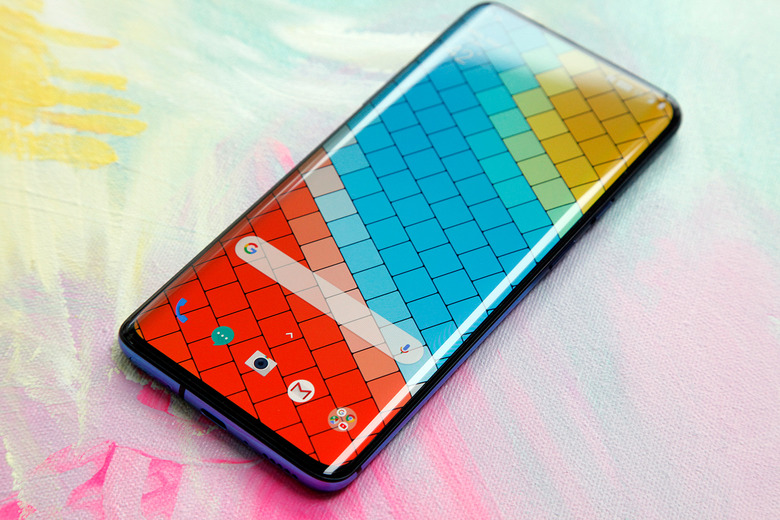10 Exciting OnePlus 7 Pro Features You Won't Find On Any iPhone
No new flagship smartphones come as much of a surprise when they're announced these days, because most of the key details surrounded them leak long before any official announcements are made. That is especially true of the OnePlus 7 Pro, which was finally unveiled on Tuesday morning. From official press renders and key specs to pricing and release timing, just about everything you could possibly want to know about the OnePlus 7 Pro was leaked long before today's big press conference, leaving nothing at all to surprise us on Tuesday. Of course just because there were no surprises doesn't make OnePlus' new flagship smartphone any less impressive.
In a nutshell, the OnePlus 7 Pro is the fast, sleekest, and most powerful Android smartphone in the world right now. It's one of three new handsets OnePlus unveiled on Tuesday morning, but it's the only one that will be made available in the United States. I've spent the past couple of weeks testing the new OnePlus 7 Pro, and I've been thoroughly impressed so far. Rather than pen a traditional review, however, I decided to focus on how it stacks up against its biggest competition and the only smartphone in the world that can outpace it in speed and performance tests. So in this post, you'll find 10 exciting features of the brand new OnePlus 7 Pro that are nowhere to be found on the iPhone XS Max or any other iPhone model out there.
All-screen design
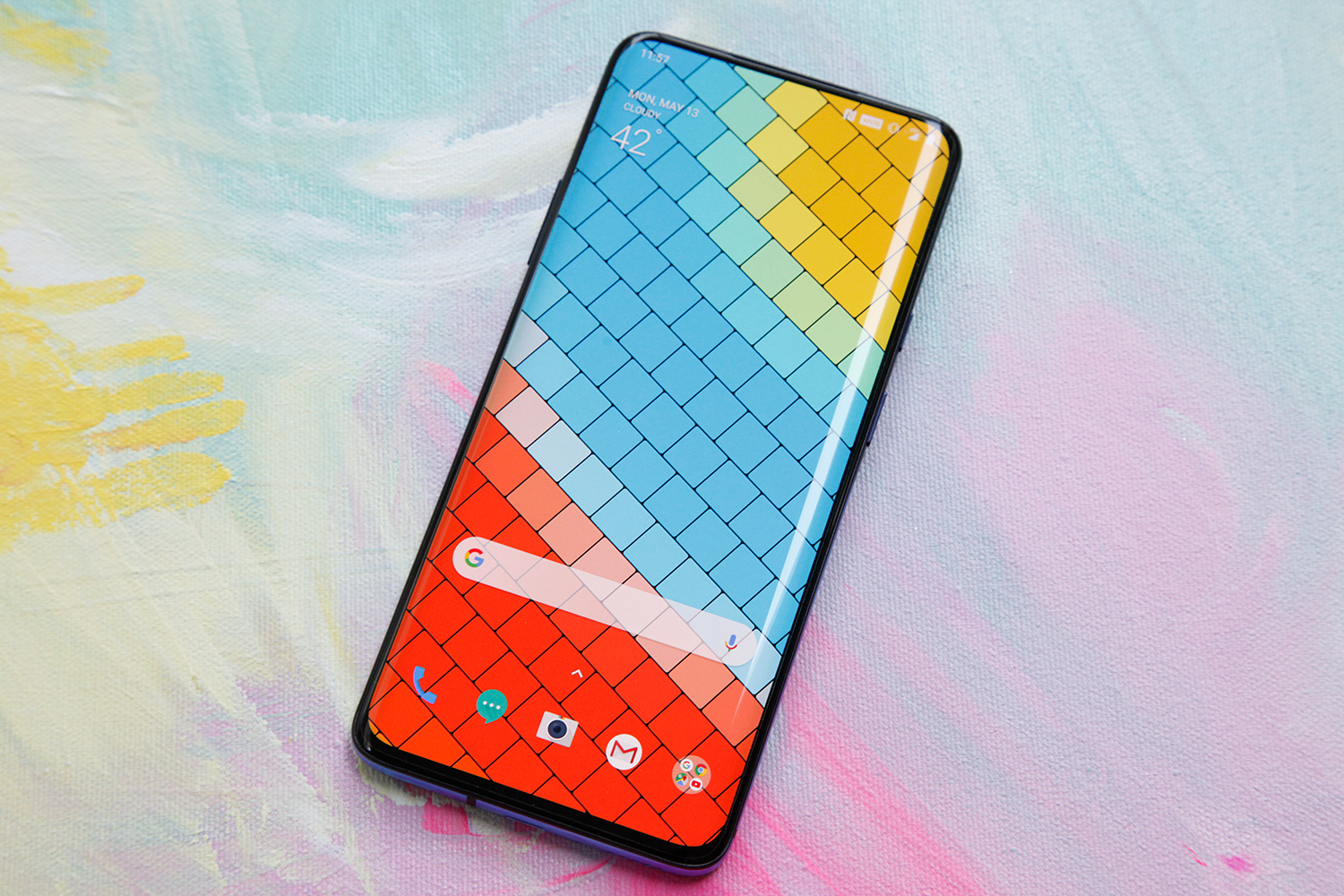
Remember when Apple first announced the iPhone X in 2017 and its tagline was "it's all screen"? Yeah, it wasn't. And it still isn't.
With a screen-to-body ratio of 82.9%, the iPhone X was nowhere close to being "all screen." In fact, it didn't even have the best screen-to-body ratio among smartphones that were available back in 2017. The iPhone XS and iPhone XS Max from last year have the same design as their predecessor, so they're also nowhere close to being "all screen."
The OnePlus 7 Pro, on the other hand, is the closest any phone in the US has come to having a truly all-screen design.
OnePlus' new flagship smartphone has a curved screen similar to the one on the Galaxy S10, but the bezels on either side of the display are even slimmer than the ones on Samsung's flagship. The bezels above and below the display are also significantly thinner than they are on the Galaxy S10. There's also no notch of any kind, and there's aren't even any holes for camera lenses in the screen like there are in Samsung's latest flagships. The result is a phone with the best all-screen design we've seen so far.
But wait... if there's no notch and no holes cut out for a front-facing camera, where is it?
Pop-up selfie camera
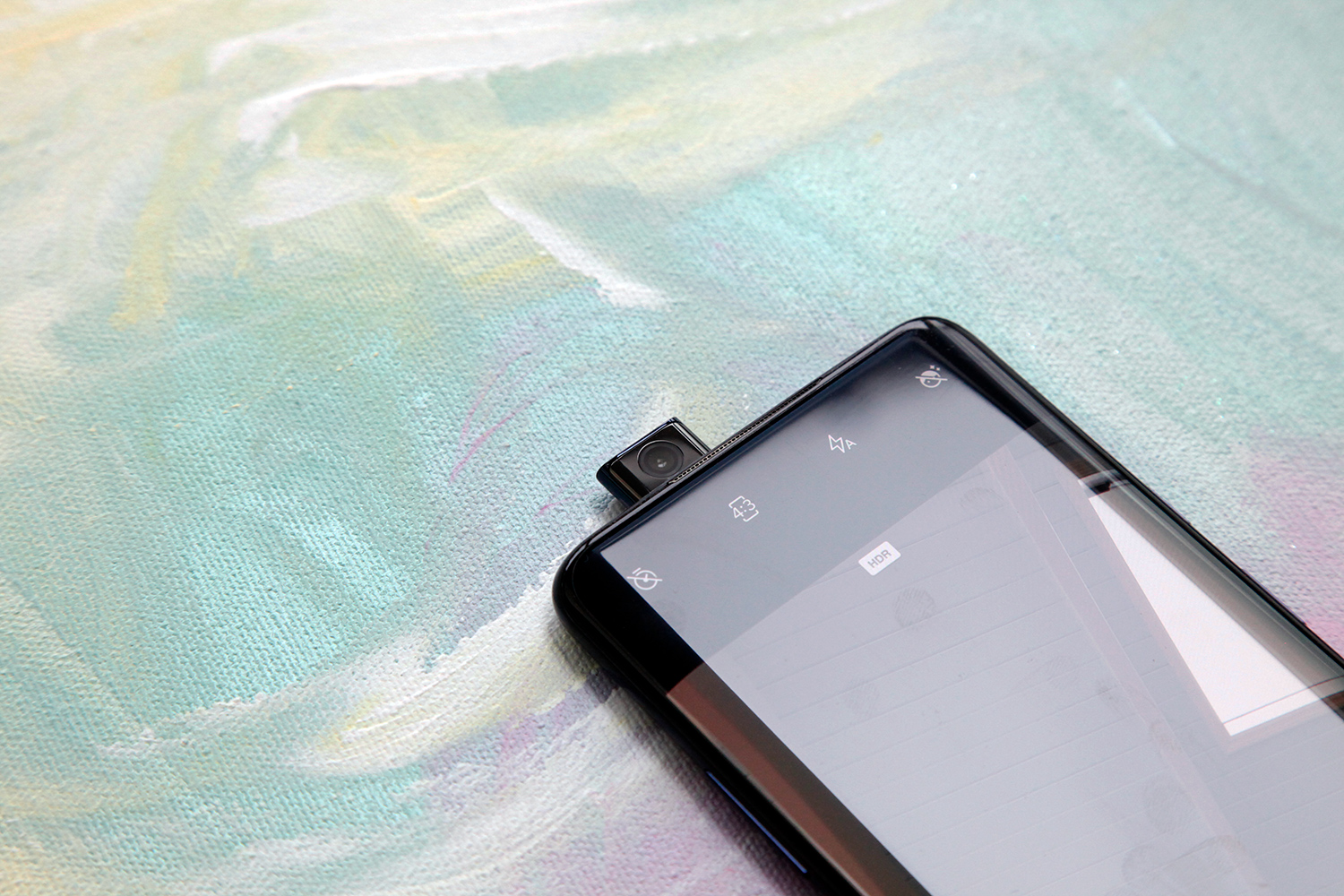
There are a few smartphones available in China that have motorized selfie camera mechanisms, but the OnePlus 7 Pro will be the first phone with this type of design to be released in the US.
Most of the time, the front-facing camera on the OnePlus 7 Pro is located inside the phone near the top edge. Whenever it's needed, it automatically raises out of the device in what OnePlus calls an "elevator mechanism." The camera then lowers itself again once the user is done with it.
Apart from taking selfies, the camera has a second core function: it's needed for the OnePlus 7 Pro's face unlock feature. The camera only takes a fraction of a second to raise or to lower, so face unlock is still reasonably quick on the phone. Previous-generation OnePlus phones had the fastest face unlock I've ever tested though, so it's a bit annoying that performance takes a noticeable hit because of the pop-up camera design.
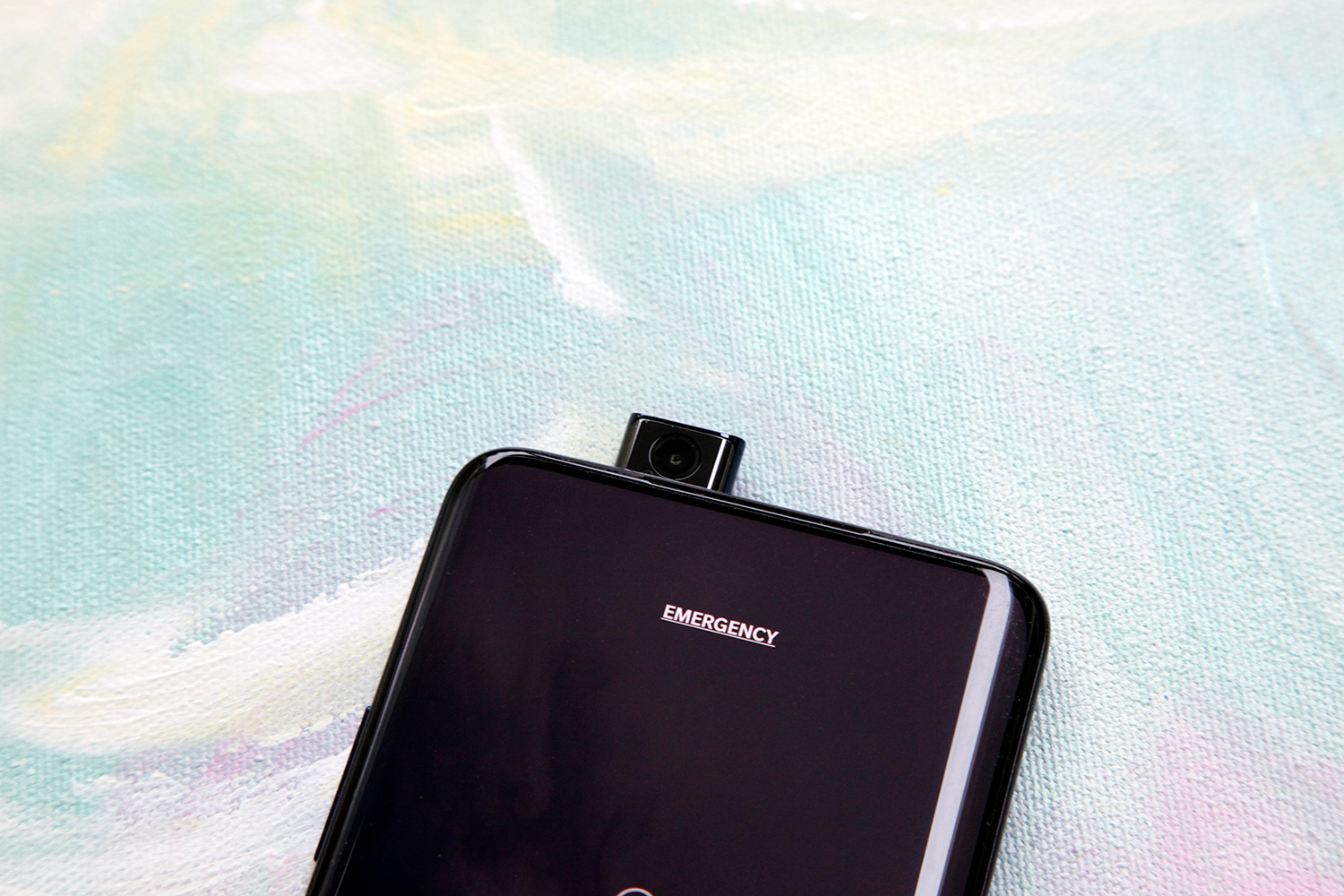
There is an obvious downside to the pop-up selfie camera design, and it's entirely unavoidable. A mechanism like this will always be more prone to breaking than a static camera mounted above around the screen like most phones, or inside it like the Galaxy S10. OnePlus says it tested the OnePlus 7 Pro's elevator mechanism has been tested to work more than 300,000 times, which means it should continue to function without issue for five years if it's used 150 times a day every day. There's no telling what might happen when dirt and debris inevitably work their way inside the mechanism.
As for accidental damage, that's certainly possible as well. But OnePlus did come up with a great feature to protect the camera module against damage from accidental drops. Using the accelerometer, the OnePlus 7 Pro can sense when the phone is dropped. When a drop occurs while the front-facing camera is in use, the mechanism will automatically retract. I tested this feature more than a dozen times and found that it worked every time, without fail. I would estimate that the camera is fully retracted within about 2 feet when the phone is dropped at a normal speed though, and it's unclear what might happen if an impact occurs before the camera is fully retracted.
In-display fingerprint sensor
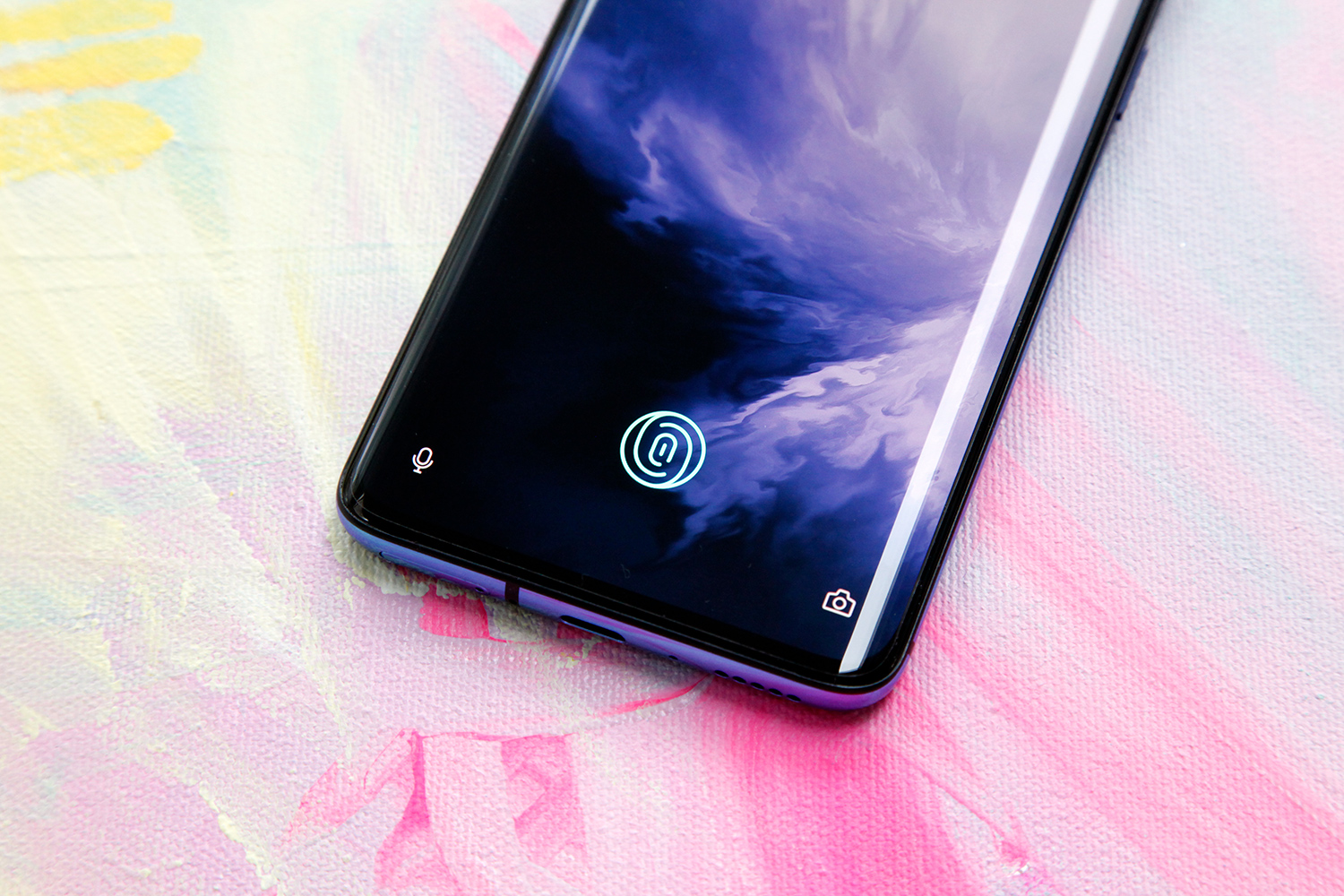
Last year before they got popular, everyone wanted an in-display fingerprint sensor in his or her next smartphone. Now that they're finally widely available in a number of popular phones, feelings are mixed. Regardless of which side of the fence you fall on though, the OnePlus 7 Pro has an in-display sensor, it's 36% larger and 62% faster than the sensor in last year's OnePlus 6T, and it's something you won't find on any iPhone model.
Some people don't like in-display fingerprint sensors because they've only had experience with the Galaxy S10. The ultrasonic sensor Samsung uses is noticeably slower than a conventional fingerprint reader, though it's also far more secure. The OnePlus 7 Pro uses a standard sensor so it's just as fast as any other flagship phone out there. That doesn't address the other problem people have with sensors in the screen, however. Since there's nothing to feel for to mark the sensor's position, you have to look at the phone in order to find the sensor and unlock it. It's not like having an iPhone 8, for example, where you can easily place your thumb on the home button and unlock the handset as you take it out of your pocket.
90 Hz refresh rate

When Apple announced its first iPad Pro model with a 120 Hz "ProMotion" display back in 2017, there was an expectation that an iPhone with a 120 Hz refresh rate wouldn't be far being. Two iPhone generations have come and gone since then, but 120 Hz screens are still nowhere to be found. The iPhone is still remarkably smooth with a 60 Hz refresh rate of course, but Apple was just outdone by OnePlus and its new OnePlus 7 Pro.
OnePlus calls the new 6.67-inch QHD+ display on the OnePlus 7 Pro a "Fluid AMOLED" screen, which refers to the increased fluidity enabled by a 90 Hz refresh rate. It's the first smartphone in the world to feature an OLED screen with a 90 Hz refresh rate, and the difference is beyond apparent.
As an iPhone user who reviews tons of Android phones, it's always frustrating to me how much less fluid Android phones are than iPhones. The Android platform itself is the biggest issue. There are some things that Google just can't ever seem to get right, like scroll physics, for example. But the 90 Hz screen on the OnePlus 7 Pro provides does the best job I've seen of providing the smoothest possible Android experience.
Ultra wide-angle lens

Apple's smartphones had the best mobile cameras on the planet for almost a decade. Then Apple lost its lead to companies like Huawei and Google, and it still hasn't recovered. In fact, the gap has only widened in 2019.
OnePlus can now be counted among the companies with a flagship phone that outperforms Apple's latest iPhones in the camera department — in some ways, at least. One of those ways is field of view, thanks to the new ultra wide-angle lens on the OnePlus 7 Pro.
Above the 48-megapixel sensor at the center of OnePlus' new triple-lens camera system is a 16-megapixel ultra wide-angle lens that captures far more content than you'll ever get from an iPhone camera without using the panorama feature. It's a 117°, f/2.2 lens that lets in plenty of light to capture all the detail in those landscape shots.
3x optical zoom
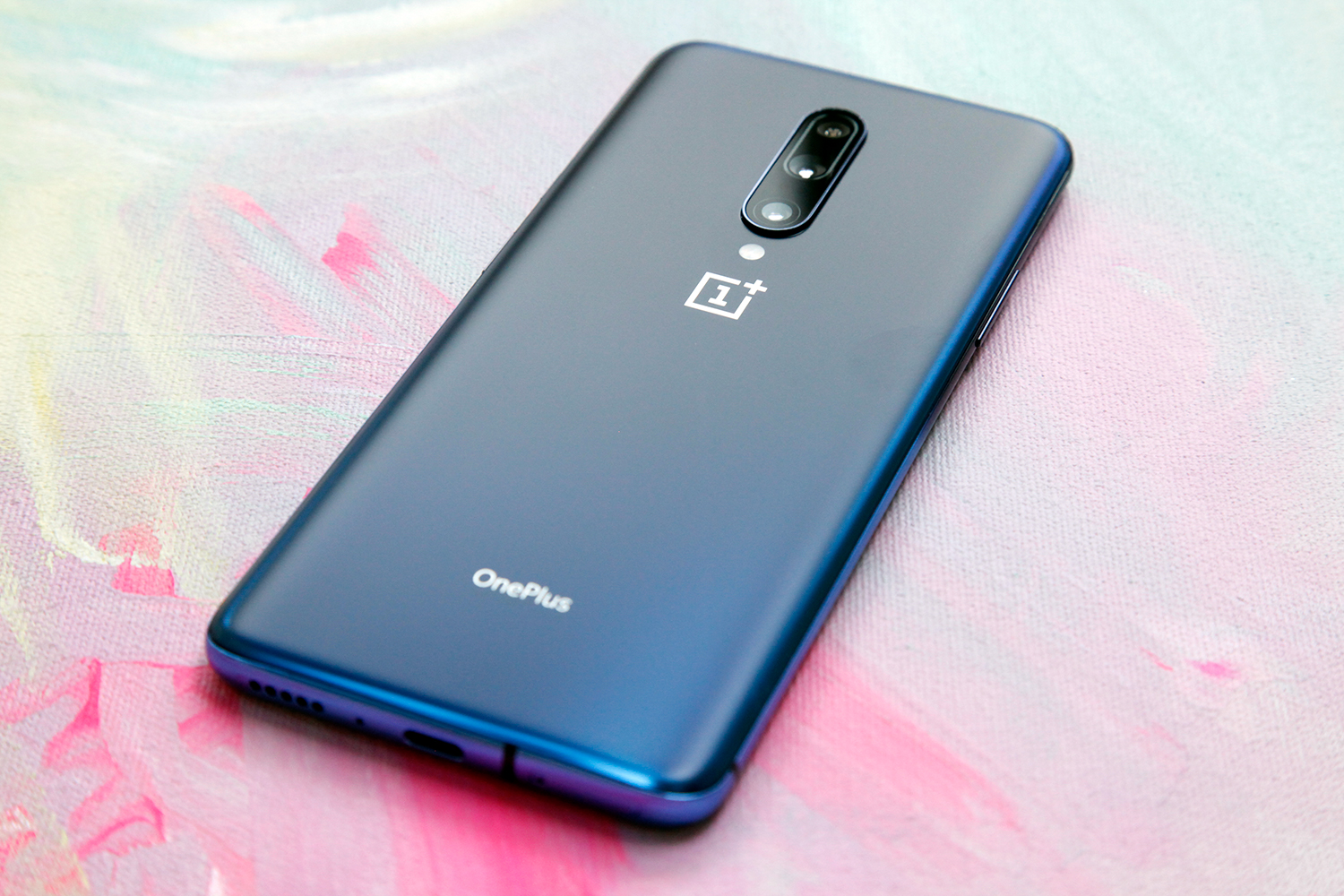
Even better than the new ultra wide-angle lens on above the main camera on the OnePlus 7 Pro is the telephoto lens beneath it.
Apple was the first company with a widely available phone that had a telephoto lens on the back that provided 2x optical zoom and a background blurring effect known as bokeh. While the quality of Apple's camera has improved since the iPhone 7 Plus was released back in 2016, the telephoto lens still only supports 2x zoom.
Zoom has always been a pain on smartphones because of the degradation in quality that results from digital zoom. Optical zoom is awesome to have, and now OnePlus is upping the ante on the OnePlus 7 Pro. 3x optical zoom means having the ability to zoom in even further with no meaningful loss of quality. Hopefully Apple follows suit with the new triple-lens camera on the upcoming iPhone 11, but in the meantime, OnePlus has Apple beat.
Zen Mode

Every major smartphone maker has introduced features aimed at helping people curtail smartphone overuse, but no other company has gone as far as OnePlus has with the new Zen Mode on the OnePlus 7 Pro.
Zen Mode was born from an idea that can from the OnePlus user community, and it basically takes Do Not Disturb to the next level. When enabled, nearly all of the phones feature become unusable for 20 minutes so that the user can take a break from his or her smartphone. And when I say unusable, I really do mean unusable... there's no way to disable Zen Mode once it's activated. Not even restarting the OnePlus 7 Pro will disable Zen Mode — the user has no choice but to wait 20 minutes.
Of note, there are a few features that are left enabled in Zen Mode. You can still capture photos and videos with the camera, and incoming and outgoing emergency calls will still work.
Up to 12GB of RAM and UFS 3.0 storage
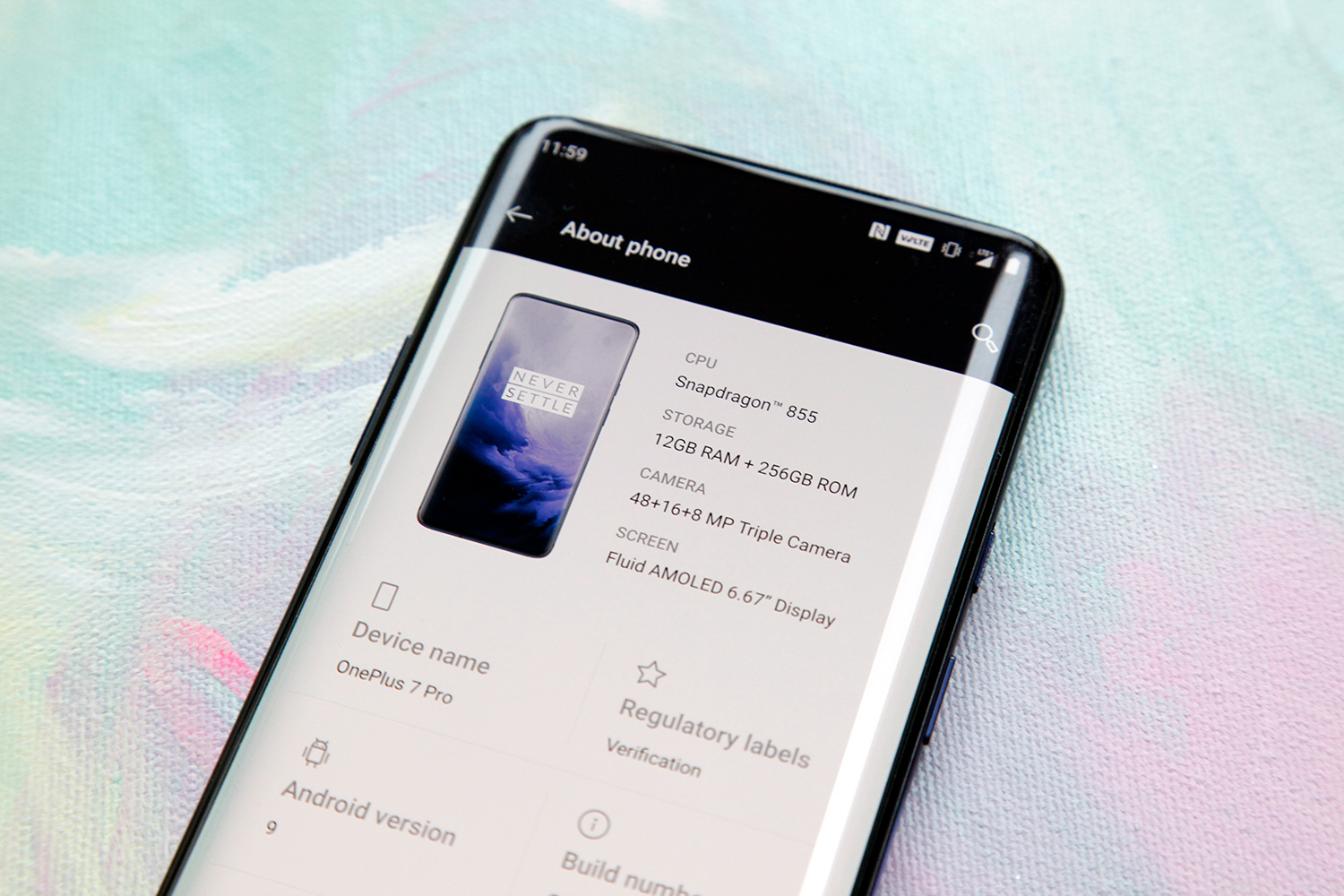
The OnePlus 7 Pro is the first smartphone to be equipped with new UFS 3.0 flash storage chips. OnePlus says the new standard is about nine times faster than the UFS 2.1 storage found in other smartphones like the iPhone. On top of that, the OnePlus 7 Pro can be purchased with as much as 12GB of RAM, which is three times more RAM than the iPhone XS and iPhone XS Max.
The 256GB OnePlus 7 Pro I've been testing has 12GB of RAM and it is remarkably fast. It will be interesting to see how it stacks up against the iPhone XS when real-life speed tests being hitting YouTube.
Warp Charge 30
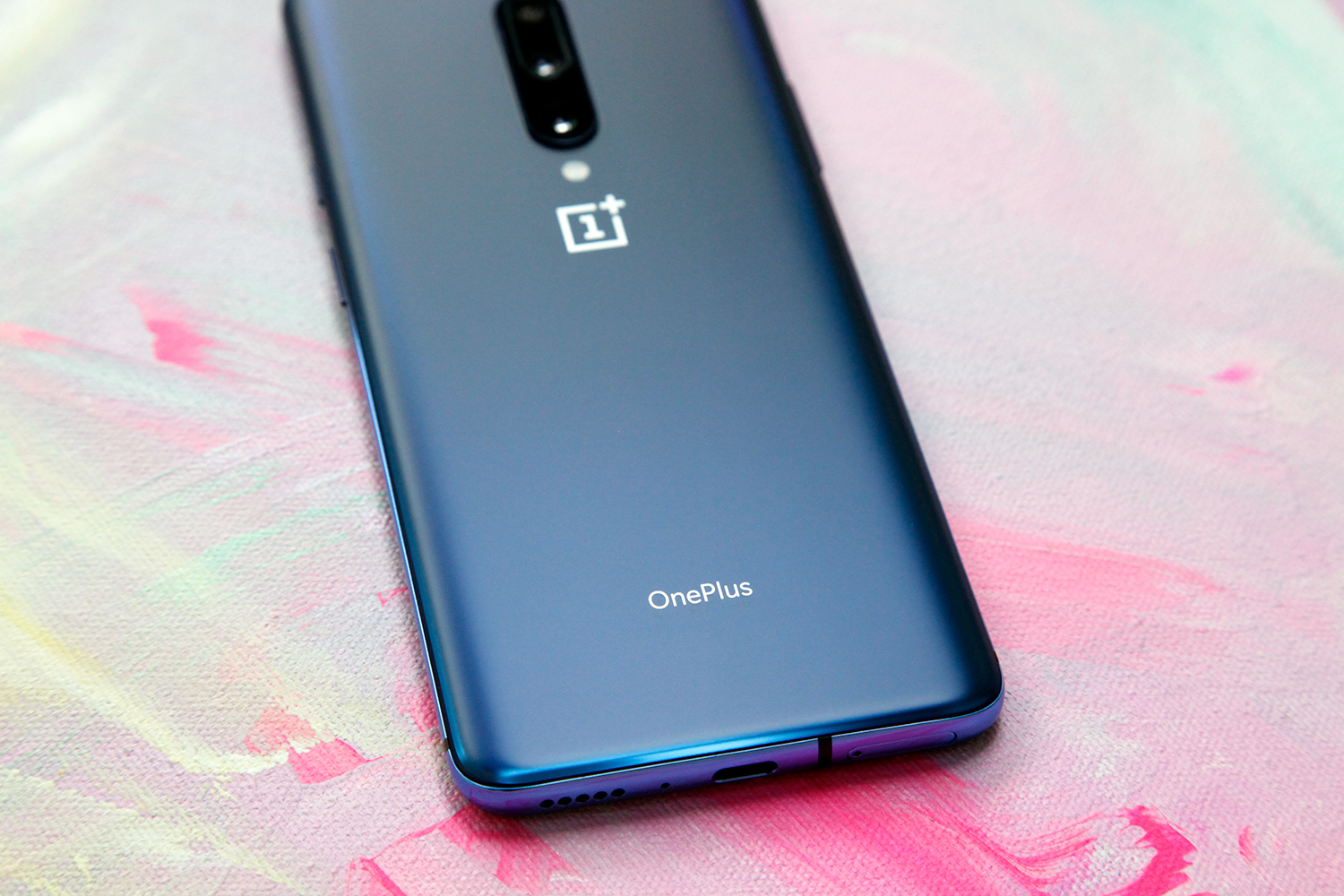
Charging speed is one area where Apple just can't seem to catch up with its Android rivals. Its latest iPhones support faster wired and wireless charging speeds than earlier models, but they're still nowhere close to matching flagship Android phones.
The OnePlus 7 Pro still doesn't include wireless charging support, which is infuriating. It makes up for the omission at least in part by supporting lightning-fast wired charging speeds of up to 30 watts. OnePlus' Warp Charge 30 technology is 38% faster than its previous-generation fast charging tech, and it's almost twice as fast as Apple's iPhone XS, XS Max, and XR, which max out at 18 watts.
A reasonable price tag

The OnePlus 7 Pro is the most expensive smartphone OnePlus has ever released. Pricing starts at $669 for the 128GB model in Mirror Gray with 6GB of RAM. For comparison, the OnePlus 6T with 8GB of RAM And 128GB of storage costs $579. The most expensive OnePlus 6T model was the McLaren Edition phone, which cost $699. Meanwhile, the OnePlus 7 Pro goes all the way up to $749 for the Nebula Blue model with 256GB of storage and 12GB of RAM, though you can also get the phone in either color with 256GB of storage and 8GB of RAM for $699.
Some OnePlus fans will be undoubtedly be upset that the OnePlus 7 Pro is so much more expensive than last year's model, though it's important to note that the OnePlus 6T will remain available for sale on OnePlus' site and through T-Mobile. But let's put this in perspective — an iPhone XS Max with half as much storage costs $1,099. The 256GB iPhone XS Max costs a whopping $1,249, which is $550 more expensive than a OnePlus 7 Pro with the same amount of storage. $550! Long story short, OnePlus' new flagship phone is a fantastic value when you compare it to the competition.
